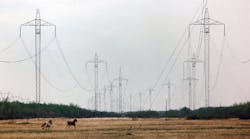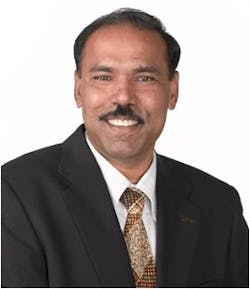Hi Everyone,
This month I’m turning the feature column to an old friend Ram Adapa. Ram and I met at IEEE’s PES general meeting more years ago than I care to think of. We were both interested in the power electronics technology that was being deployed on the grid. Ram Adapa is a Technical Executive in the Power Delivery and Utilization Sector at EPRI. His research activities focus on High Voltage Direct Current (HVDC) transmission, Flexible AC Transmission Systems (FACTS), Custom Power, and Fault Current Limiters. Ram is also an IEEE Fellow and has been honored several times by IEEE for his outstanding contributions to the profession. He received the 2016 IEEE PES Nari Hingorani Custom Power Award. He has authored or coauthored more than 125 technical papers and is an IEEE Distinguished Lecturer. He is an individual member of CIGRE and a Registered Professional Engineer.
Enjoy,
Gene
HVDC transmission is rapidly expanding around the world, with quickly evolving concepts and configurations. Currently more than 200 HVDC systems are operating around the world and many new HVDC projects, both overhead line and cable projects, are being planned. HVDC grids that overlay the AC network are being seriously considered for the future development of the electric power system. At present, no high-voltage DC grids are operating, although multiterminal DC transmission systems are in service.
A DC grid has three or more converters with two or more transmission paths for power to flow. A multiterminal DC transmission system is a single transmission path with one or more taps. The main challenge in the development of constructing an overlaying DC grid is that the benefits of new transmission must exceed its costs. Planning a DC grid requires a thorough investigation into how its benefits can be determined.
HVDC applications are increasing steadily in many parts of the world for various reasons. In countries such as China, India, and Brazil, ultra-high voltage direct current (UHVDC) transmission projects at 800 kV are being implemented to meet increasing load demands. HVDC applications are also increasing to interconnect renewable generation resources, such as wind and solar, to the main transmission network because of technical and economic advantages. Difficulties in getting new rights-of way for overhead transmission are also forcing utilities to look at maximizing the existing asset utilization by considering options such as AC line conversion to DC operation for increased capacity.
With grid integration of renewable generation and increased load demands, utilities have been also considering the use of more Flexible AC Transmission Systems (FACTS) technologies to control power flow and increase existing asset utilization. EPRI has been assisting many utilities to make informed decisions while applying FACTS technologies, which are also based on voltage source converters.
As part of its HVDC research program, EPRI sponsors the HVDC Task Force (two times a year) and HVDC & FACTS Conference (every second year) to promote the exchange of knowledge and ideas related to these technologies. The 2017 HVDC Task Force and HVDC & FACTS Conference was hosted by EPRI on August 9, 10 and 11, at its Palo Alto office.
The HVDC Task Force meeting on August 9, 2017 provided a unique opportunity for HVDC and FACTS subject matter experts to collaborate with EPRI researchers on active technical research including; HVDC technology surveillance and reference guidelines, electrical effects of HVDC, applications of HVDC technology and new developments, HVDC component performance and testing, HVDC cable Interest Group, and HVDC Planning.
The HVDC & FACTS Conference on August 10 and 11, 2017 provided an opportunity for international subject matter experts to exchange knowledge, experiences, and best practices related to HVDC and FACTS. The conference included presentations, discussions and panel sessions on numerous topics including; next-generation HVDC & FACTS technologies, application of DC and FACTS for renewable integration, life extension of HVDC and FACTS, planning and operation of DC and FACTS installations, expansion and uprating of HVDC and FACTS stations, environmental performance and electrical effects, and health effects.
These discussions helped utilities better understand advances in HVDC & FACTS technology application and design, the rationale behind capital and maintenance decisions for HVDC components, and created awareness of EPRI research in the area of HVDC & FACTS. In total, about 100 utility HVDC & FACTS experts, vendors and academia contributed to this extremely successful professional collaboration and exchange of working knowledge. These information exchanges exemplify the value that collaborative events, such as the HVDC Task Force and HVDC and FACTS Conference, offer to the electric power industry.
In addition, EPRI’s research at its Lenox laboratories in Lenox, MA is continuing to study electrical effects such as electric fields and providing guidelines for designing HVDC lines to mitigate electrical effects as well as developing software that can be used to simulate different tower configurations. HVDC live line maintenance is also gaining increased attention these days, and EPRI has been working on the best practices and tools needed in this area. This all ties in with EPRI’s R&D program, and many projects are dedicated to developing technologies related to HVDC and FACTS to solve industry issues and to assist utilities making informed decisions while considering these applications.



